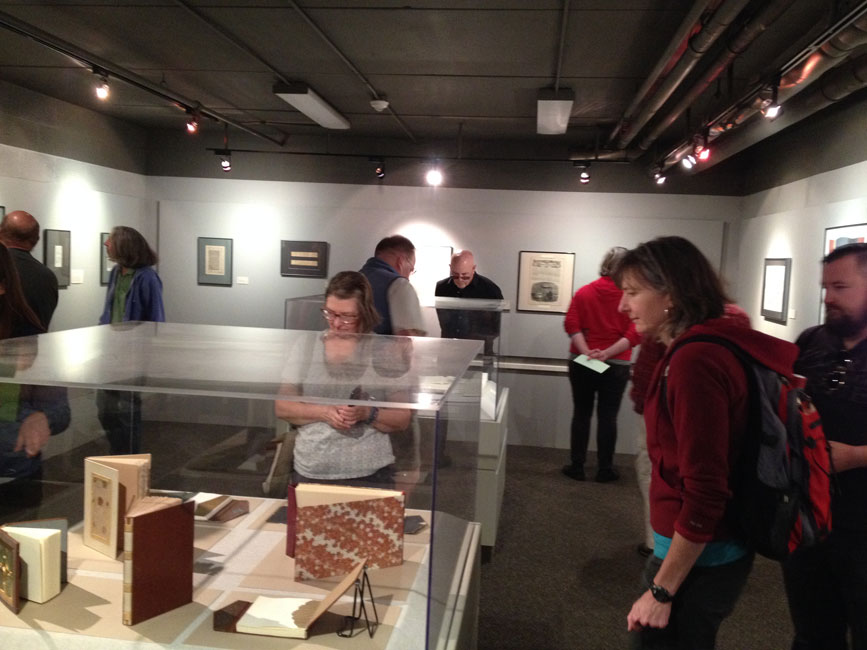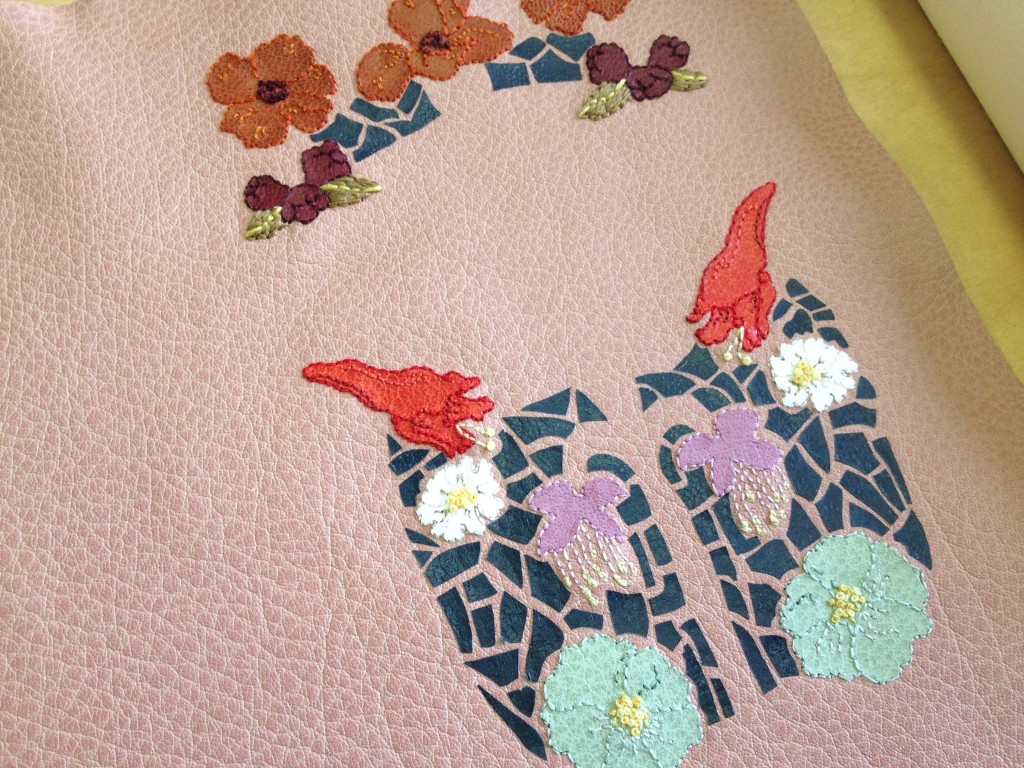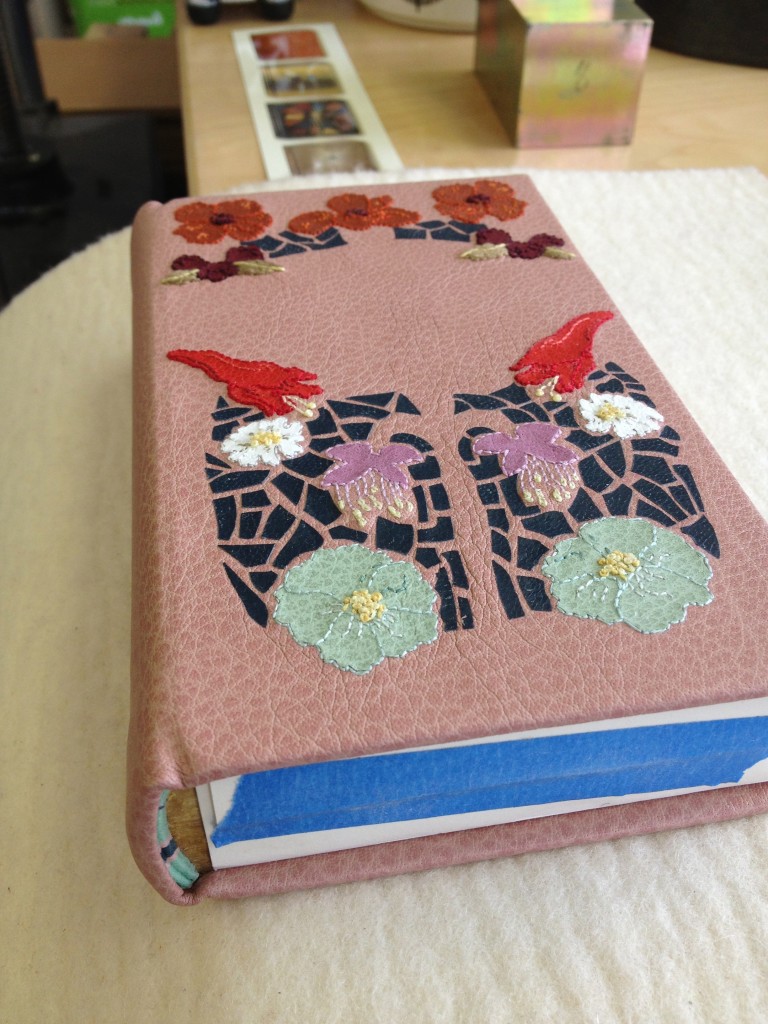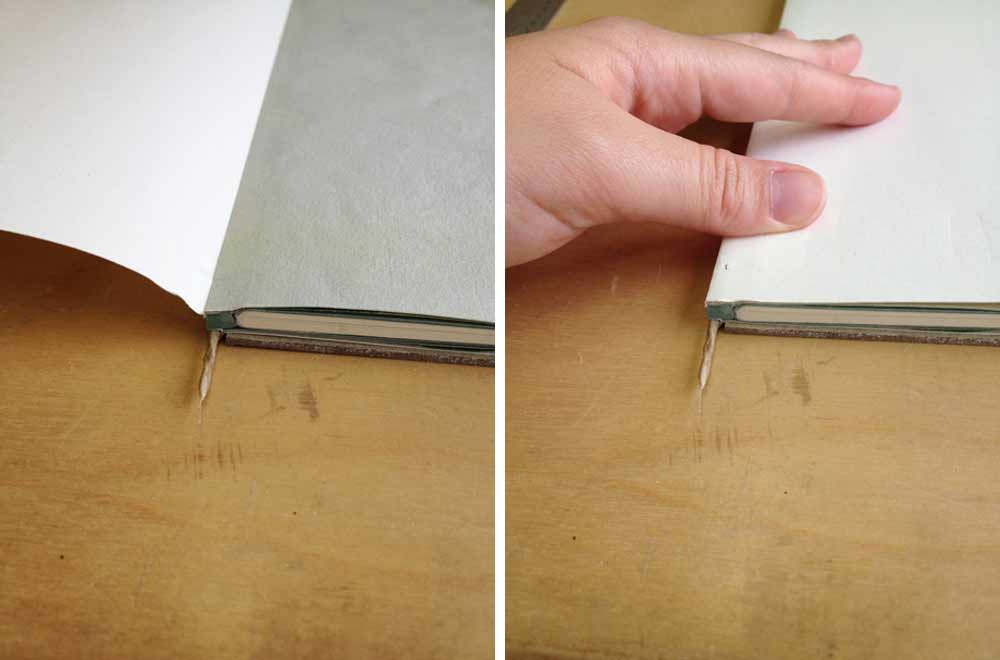SATURDAY, SEPTEMBER 13
9:00 – 12:00
Morning Workshop Session
The mini-conference offered two half-day workshops with calligrapher, Nancy Leavitt and papermaker, Katie MacGregor. The group of participants were divided into two groups. For the morning session, I attended Nancy’s workshop titled Pen, Paper and Paint.
Nancy’s first attempt at calligraphy came by inspiration from a Seventeen article; clipping the tip off of a felt tip pen. To pursue the practice of calligraphy, Nancy studied with Peter Halliday in the 1980s. Even though the workshop lasted for only three hours, Nancy was able to pack years of knowledge into her instructions.
At the start of the workshop, Nancy presented her creative process. When commissioned to calligraph the lyrics to six Beatles’ songs, Nancy took the project beyond the initial request and created an in-depth artist book to incorporate the historical and social events occurring at the release of each song. In the image below, Nancy shows us her charts and mock-ups developed during the creative process.
After whipping up some egg glaire and adding water to the gouache one drop at a time, Nancy presented some tips on mixing paint, filling pen nibs, and painting. Each student received a special packet of paper varieties. One half of the packet included a selection of Katie MacGregor’s handmade paper ranging from 1 day old to 20 years old. Nancy loves to allow her paper to ‘age’ because it creates a more agreeable surface to work on.
As we experimented with the paper varieties and pen nibs, Nancy came around to write each of our names on the paper of our choice. Towards the end of the workshop, Nancy gave a demonstration on turning a feather into a quill. Nancy shared her amazing collection of feather quills, which are carefully and lawfully collected. First, Nancy removed the membrane from the shaft by running it along a hot iron. Then she revealed her coveted penknife from her apron, a tool specifically for shaping the tip of a quill. Each student was presented with a keepsake quill, which we played with by filling the nib with gouache and writing on each of our paper samples.
1:00 – 4:00
Afternoon Workshop Session
In the afternoon, my group headed over to Katie MacGregor’s studio for our second workshop session, A Hand Papermaker’s Perspective. Her studio is just steps from her home, set back in the woods and down a long gravel road. Katie invited us upstairs first, to share with us her creative process, how she logs her formulas and a collection of books created using her papers. Katie has also worked on a variety of custom paper orders for institutions and artists, including a three sheet order for the most vibrant and saturated red she could make.
We headed downstairs for the actual labor. Katie first mixed up a bucket of fresh pulp and pigment, which she then added to the large vat. The smaller vat was given an addition of flax. Each student was given the opportunity to pull one small sheet and one large sheet. Katie gave a quick demonstration of the proper posture and techniques for shaking the mould, then the process of tipping the mould onto the felts in order to couch the sheets. After watching Katie, each student embraced the messy, wet process of papermaking.
As a treat, Bernie Vinzani added a special watermark to the larger sheets. Using vinyl lettering, Guild of Book Workers Maine 2014, was heated to the wire threads of the mould, a quicker alternative to the traditional technique for making watermarks.
Once the last sheet was couched, Katie moved the paper into her hydraulic press, squeezing out the excess water. Then she carefully separated each sheet from the felts for the next stage in the drying process. As we finished the workshop, Katie’s close friends were preparing a wonderful spread of hors d’oeuvres and libations. Katie and Nancy also put together a selection of items for sale and I delightfully walked away with eleven new sheets of handmade paper, two of which I’ve already sewn into two soon to be fine bindings.
7:00 – 9:00
Evening Presentation
Wild blueberries are native to parts of Maine and Canada. As an added treat for the mini-conference participants, Nancy and Katie prepared a wonderfully home-cooked meal of Blueberry Chicken over Rice. After our meal, Nancy’s husband, Blueberry Specialist David Yarborough gave a thorough presentation on the history of the blueberry plant and its involvement in Maine’s agriculture industry.
That ends the festivities of the mini-conference. As the first event of this scope I’ve put together, I think it was a success from the point of view of the CCLC, conference participants and workshop instructors.

























